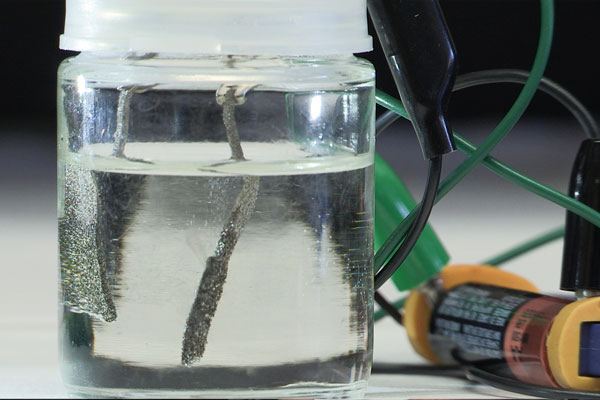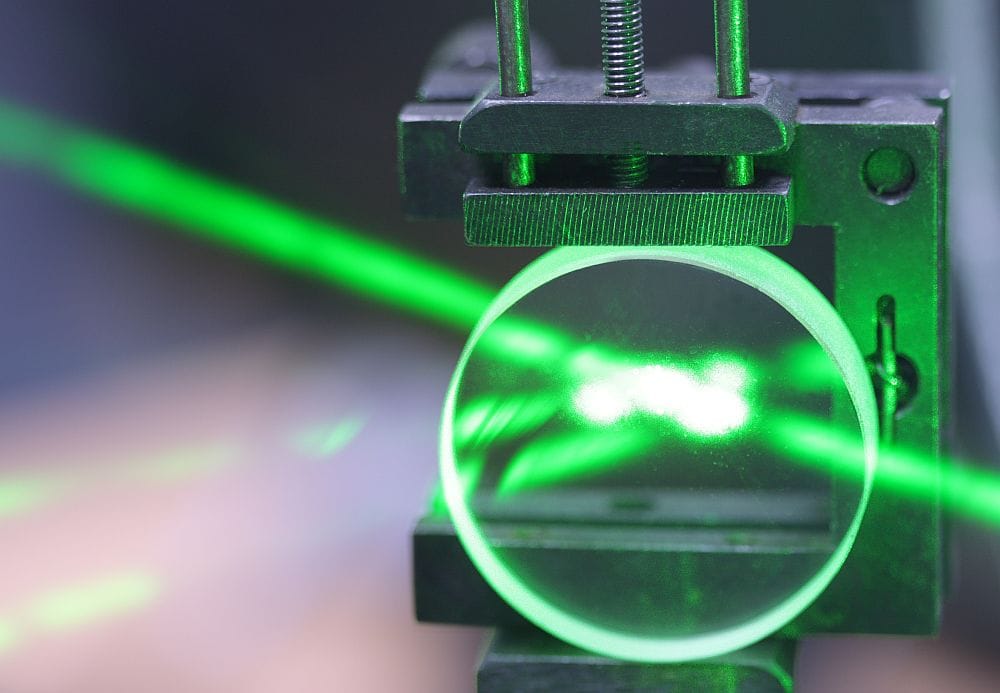
[Image above] This new water splitter has inexpensive electrodes and only requires a AAA battery to generate clean hydrogen. Credit: Mark Shwartz/Stanford Precourt Institute for Energy
When it comes to alternative fuels, hydrogen is a favorite for potentially powering the environmentally friendly future.
But shifting processes and systems built on natural resources necessitates a lot of challenging adaptations. Hydrogen storage is one—and a potential place where advanced ceramics may come in handy—and another is hydrogen generation.
Steam reforming methane currently generates most of the hydrogen produced in the United States, according to the DOE’s Alternative Fuels Data Center website. But hydrogen is also “locked up in enormous quantities in water,” says the site. Getting the hydrogen out is the tricky part.
Eileen has reported before on research into some slick water splitting chemistry to generate hydrogen, and many other researchers are also working toward better ways to break water into its constituent parts.
A group of researchers from Stanford is among that troupe, and they are leading a new charge—their simple water splitter needs only a AAA battery and skips the precious metal catalysts present in other splitters, making a cheaper device that is promising for making a hydrogen future all the more possible.
Water splitters themselves are nothing new, but coming up with a solution that is adequately low cost and industrially scalable has been a challenge in the field.
“Using nickel and iron, which are cheap materials, we were able to make the electrocatalysts active enough to split water at room temperature with a single 1.5-volt battery,” senior author and chemistry professor Hongjie Dai says in a Stanford press release. “This is the first time anyone has used non-precious metal catalysts to split water at a voltage that low. It’s quite remarkable, because normally you need expensive metals, like platinum or iridium, to achieve that voltage.”
The research, published in Nature Communications, details novel nickel-based catalysts that were discovered by Dai’s graduate student Ming Gong. “Ming discovered a nickel-metal/nickel-oxide structure that turns out to be more active than pure nickel metal or pure nickel oxide alone,” Dai says.
The catalysts are nickel oxide and nickel heterojunction-like structures that are attached to mildly oxidized carbon nanotubes, according to the paper. “This novel structure favors hydrogen electrocatalysis, but we still don’t fully understand the science behind it,” Dai says.
They do know that the catalysts allow water to be split at a lower voltage, allowing the use of simple battery to power the device. The device “achieves ~20 mA cm-2 at a voltage of 1.5 V,” according to the paper’s abstract.
The availability, and thus lower cost, of the catalysts and the energy savings also mean that the technique is looking promising for industrial scaling.

Credit: Stanford Precourt Institute for Energy; YouTube
The researchers are trying to improve the durability of their device next. “The electrodes are fairly stable, but they do slowly decay over time,” Dai says. “The current device would probably run for days, but weeks or months would be preferable. That goal is achievable based on my most recent results.”
Another possible avenue that the researchers are planning to explore, according to the release, is to adapt the splitter to be powered by solar energy—no battery required. And, according to the authors, the splitters could also be used to generate chlorine gas and sodium hydroxide.
The paper is “Nanoscale nickel oxide/nickel heterostructures for active hydrogen evolution electrocatalysis” (DOI: 10.1038/ncomms5695).
Author
April Gocha
CTT Categories
- Energy
- Environment
- Material Innovations



